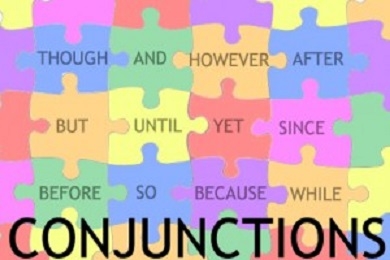
Conjunctions are words that connect words, phrases, clauses and sentences
There are three kinds of conjunctions
Coordinating Conjunctions
Coordinating conjunctions join words, phrases or causes having similar grammatical structure. The coordinating conjunctions are: but, and, or, so, nor, yet for.
Subordinating Conjunctions
Subordinating conjunctions are used in sentences which have two clauses-one main clause (independent) and one subordinate clause (dependent). The main clause can stand alone as a sentence but the subordinate clause cannot. A dependent clause adds extra information to the main clause.
Some common subordinating conjunctions are after, because, unless, while, even if whenever, whether, although, though, when, so that, even though, whereas. if
Examples: The student failed the test because he didn’t study. (The words in bold make up the subordinate clause.)
Correlative Conjunctions
Correlative conjunctions come in pairs and we have to use them in different places in a sentence. They work together and relate one sentence element to another.
Some important correlative conjunctions are either…or, whether…or, no sooner…than, neither….nor, not only…but also, rather….than, both and scarcely when, hardly when
Points to remember
Yet: We use yet to add something surprising because of what has just been mentioned.
Or: We use or to show alternatives or different possibilities.
But: We use but to introduce a phrase or clause that is different from what has been mentioned.
Nor: We use ‘nor before the second negative after the first one.
And: We use and to add one thing to another.
For: We use for to express a reason or purpose. So: We use ‘so’ to mean “for this reason”.
Picture Credit : Google




